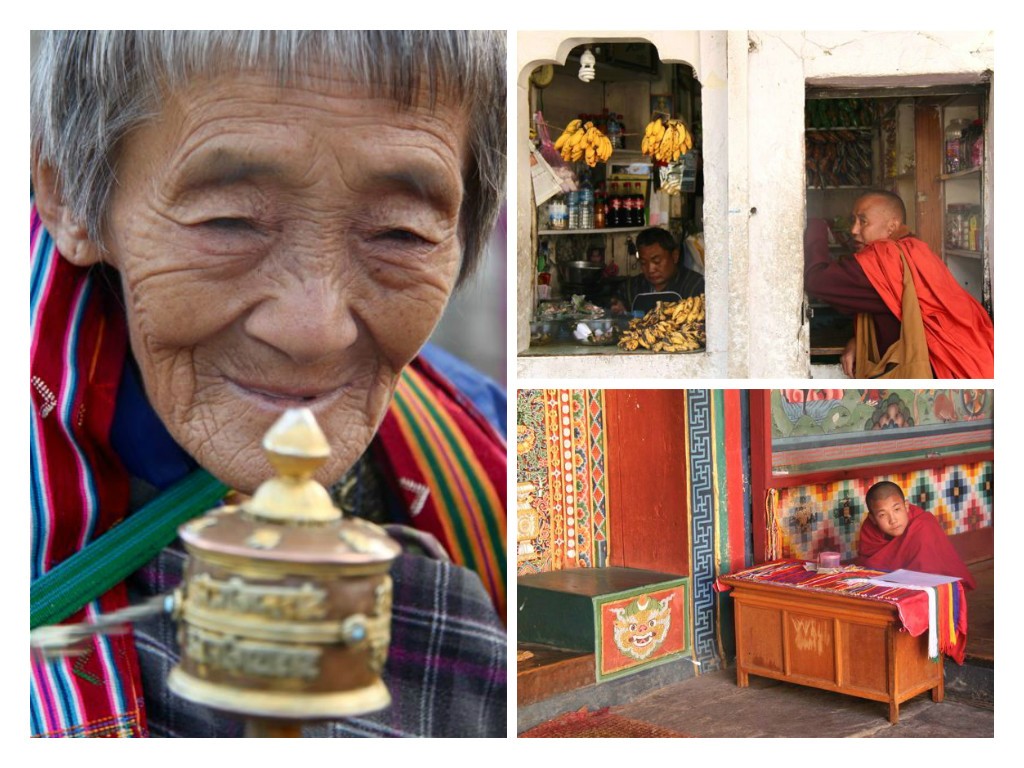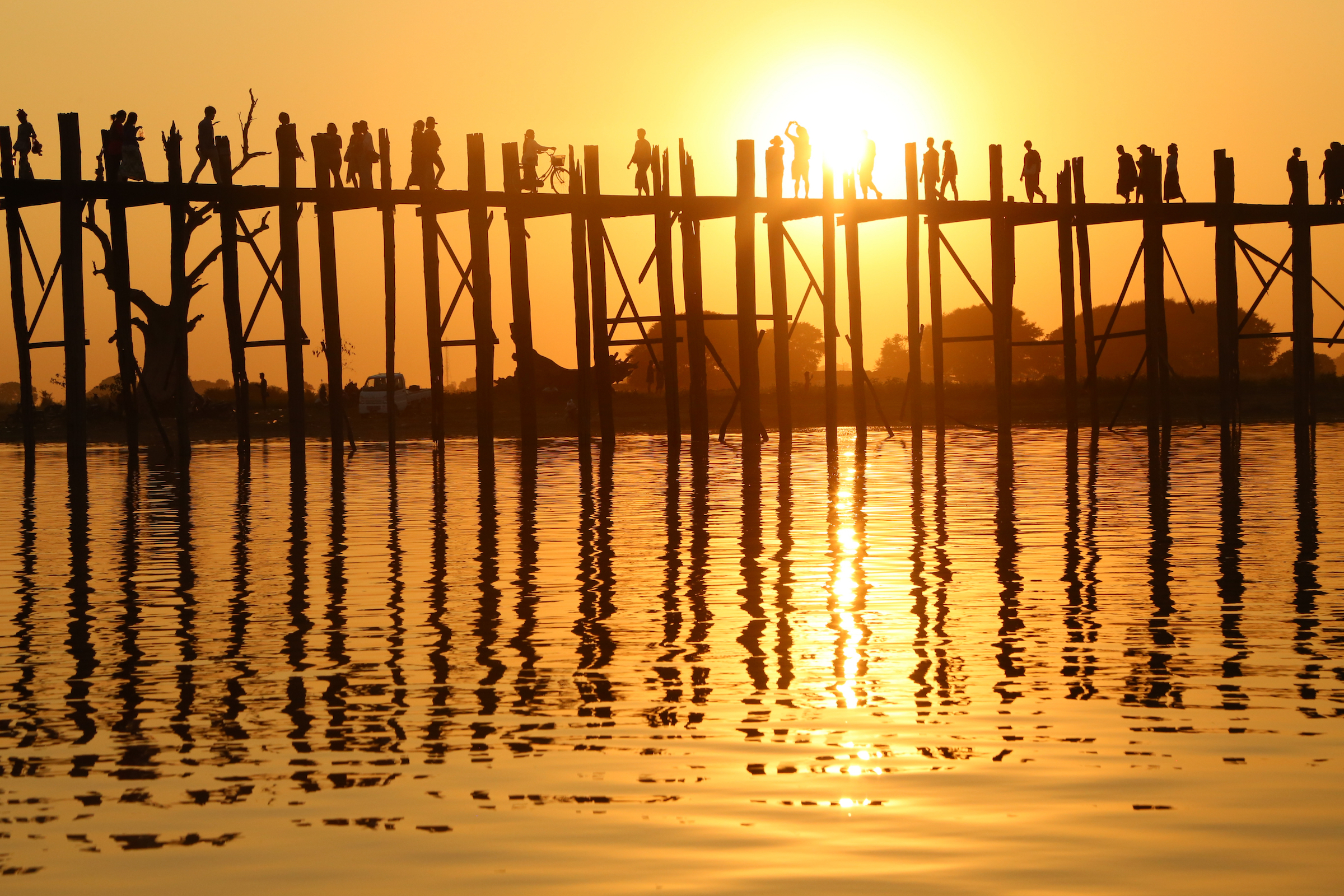
(Click on the image to read the story in pdf)

Nobody tells you that flying into Bhutan is a mini adventure in itself. From my window seat on the left side of the plane – I have done my research well – I see the Everest and the Kanchendzonga, gleaming white on that clear, sunny day. Immediately after that, we begin our descent into Paro, flying between mountains that seem within touching distance.
We seem to turn a blind corner around a hill and for a few seconds, it feels like we are going to land on top of one of the local homes we are almost grazing. And all of a sudden, we touch down and come to a halt.

Paro airport, 7300 feet above sea level and with a runway just over 6500 feet long, presents one of the most challenging descents in the world. So much so that only eight pilots are qualified to fly this route. At the airport, posters of the smiling king Jigme Khesar Namgyel Wangchuck and his beautiful queen greet visitors. It is a taste of things to come.
My first day in Paro is easy, a leisurely stroll around the market, followed by lunch at a local restaurant. This is when I get my first taste of ema datse (also spelt as ema datshi), the cheese chilli dish so popular in Bhutan. The Bhutanese eat chilli not as condiments but as vegetables, adding cheese to make it (only slightly more) palatable. All the years of gorging on stinging hot mango pickle and chutney powder has prepared me for exactly such a meal and I tuck into it with glee, but ema datse is certainly not for the weak willed or the weak stomached.
The next day, all this is soon forgotten as I huff and puff my way up to Taktshang Goemba, also known as Tiger’s Nest monastery. Perched on top of a hill, this most pious of Buddhist spaces in Bhutan seems to be carved into the cliff face itself. I have been told – wrongly as I discover – that it is an easy hike of 2-3 hours.

Legend has it that Guru Padmasambhava (also called Guru Rinpoche) flew to the top of the monastery on the back of a tigress. Young Bhutanese women overtake me with ease, some of them even carrying babies in makeshift cloth slings. Local children skip and jump up the steep path with insouciance, while groups of aged pilgrims from Thailand maintain a steady tempo. Meanwhile, I stop at frequent intervals to catch my breath and look around hopefully for stray tigresses.
On to Thimphu, whose claim to fame as a capital city is being one without any traffic lights. At its busiest intersection, a lone policeman stands directing traffic that is extremely orderly to begin with. From the looks of it, this is unique enough to make this junction a tourist attraction within Thimphu.
As with all other buildings in Bhutan, the architecture of the traffic booth is traditional. There are no ugly high-rises, no blaring horns on the roads, no backpacking throngs which have conquered Nepal and South East Asia with ease. Bhutan chose to maintain an air of seclusion till almost a decade ago, thus managing to keep away unwelcome outside influences. Television and the Internet made an appearance only in 1999 and cellphones in 2003. Most locals wear the traditional attire – knee or ankle length robes tied at the waist with a belt – of gho (for men) and kira (for women). And it is not cricket or football, but archery competitions at the local stadium in Thimphu that draw in the cheering crowds and competitive teams.


Officially Bhutan is now a democracy, but the royalty is still revered and loved universally (cue the smiling posters). Indeed, in 2008, democracy was thrust upon the local population by the fifth king, Bhutan’s current monarch. Known so far for its unique Gross National Happiness metric, Bhutan now finds itself on the path to rapid social and economic development. The interesting clash of the modern and the conservative is in play all over the country.


I see, however, that despite the ubiquitous cellphone and the occasional young men sporting skinny jeans, religion and spirituality have a stronghold on the daily lives of the Bhutanese. Nowhere is this more visible than at Punakha, where phallic symbols stare at you from the walls of homes, shops and schools alike. The story behind this is about Bhutan’s beloved monk, Drukpa Kunley, known primarily for spreading joy and wisdom among his people through ribald humour, copious amounts of wine and uninhibited sexual activities. Till date, the most common symbol honouring this “divine madman” (1455 – 1529) is the phallus, considered a symbol of fertility.
Punakha’s most striking landmark, which graces a thousand postcards originating from the country, is the dzong, situated at the confluence of the Pho Chhu (father) and Mo Chhu (mother) rivers. Dzongs, literally meaning fortresses, serve as both administrative nodes and spiritual centres. The Punakha dzong, built in the early 17th century, is as impressive as the others I have seen in Paro and Thimphu, with its brightly painted gold, red and black motifs. It is quiet and peaceful inside the dzong at that time of the evening. Prayers are in progress inside the main hall, even as young monks scurry about purposefully on the vast courtyard.


In sheer contrast, the Chimi Lhakhang temple is a riot of colour and noise, the red and yellow robes of young monks flying about in the mild evening breeze as they engage in a vigorous game of football. These are monks in training, some as young as seven or eight, and all that pent up energy finds release at the end of the day so. I have walked for thirty minutes across paddy fields dotted with gurgling streams, mini chortens (stupa-like structures) and homes with red chillis drying on the roofs, and then climbed up a mini hillock to get here.


I sit quietly and watch the tumult that greets every goal, the mock fistfights and the somersault contests. Despite the general air of chaos, at that moment, I understand the Bhutanese idea of Gross National Happiness. And I want to carry some of it back home in a bottle with me.



